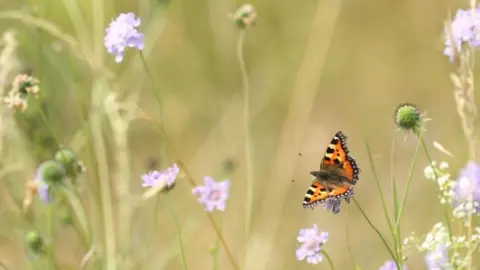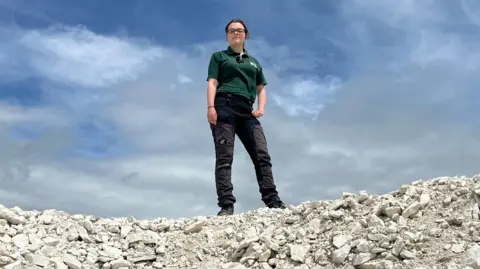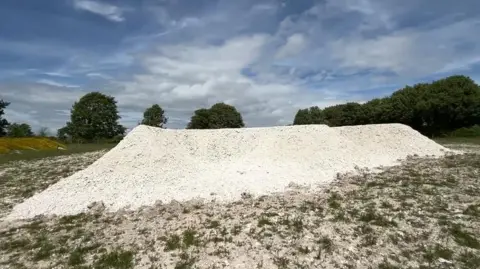New habitats for butterflies hit by record heat
 Butterfly Conservation/PA
Butterfly Conservation/PAAdaptations to some butterflies' habitats are being made to help them cope with erratic weather driven by climate change.
The Wiltshire Wildlife Trust is hoping for a bumper year for butterflies in 2025 following the record-breaking spring heat, but warns overall the insects' populations are drastically dropping.
The trust is trialling four e-shaped mounds, called butterfly banks, on its Coombe Bisset reserve to offer the creatures a space both to warm up and to cool down during heatwaves.
Caroline Longley, the trust's conservation lead for the south of Wiltshire, said: "If you have a decline in butterflies then that shows a worrying degradation of the ecosystem that supports them."
Butterfly banks are normally "S" shaped to provide maximum surface area for the creatures to sun themselves, as often they get insufficient warmth to fly.
But the new "E" shape, which was developed by ecologists from the University of Cambridge, also provides shady nooks for the insects to cool themselves during heatwaves.
An ecologist involved in the project explained the mounds of chalk are designed to mimic Wiltshire's chalk planes - a vital butterfly habitat that has disappeared from other parts of the country.

Ms Longley said record-breaking weather of any kind is a really worrisome sign of how climate change is affecting all these environments.
"It's the unpredictable nature of it that causes so many problems.
"The opportunity to get an early start has done a lot of butterfly species a lot of good.
"But the worry now is that if this moves into a summer drought, we might see problems with not enough food plants and not enough nectar resources for them," she added.

Last year's annual butterfly count revealed eight species had the worst year on record and the total number of butterflies recorded dropped by 600,000 compared to 2023's total.
Ms Longley said the drop was largely down to habitat fragmentation due to urban development and agriculture as well as erratic weather, and described butterflies as a good "indicator species" of the health of the habitat around them.
"Due to their specific requirements in terms of food plants and weather conditions, they can really show the wider trends in the natural landscape," she said.
Follow BBC Wiltshire on Facebook, X and Instagram. Send your story ideas to us on email or via WhatsApp on 0800 313 4630.
